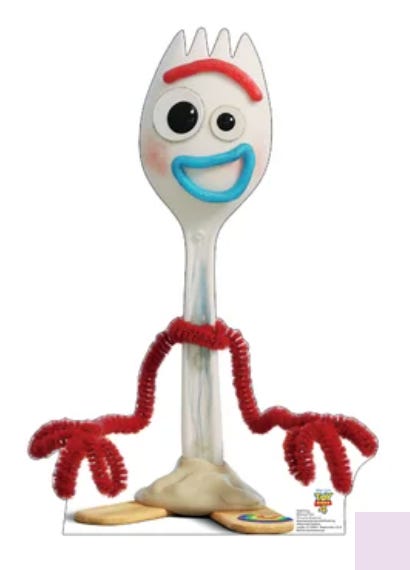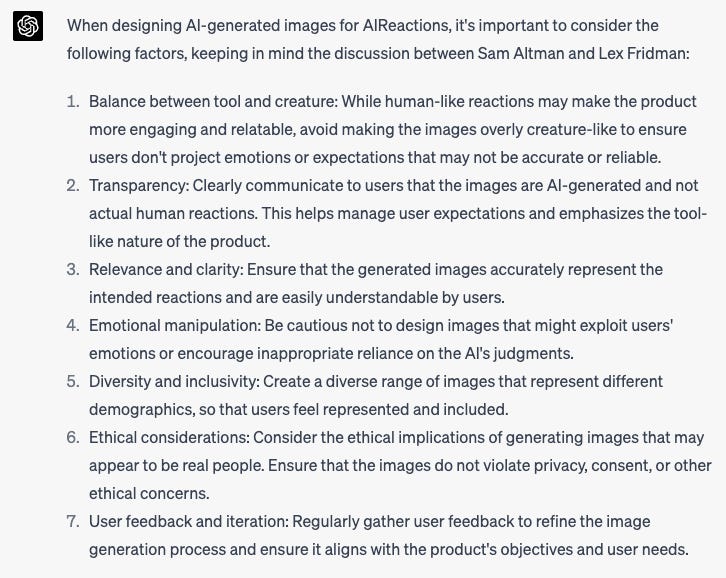It’s fun and maybe inevitable that we attribute human qualities to inanimate things. Put googly eyes on a spork and it becomes slightly harder to throw in the trash. Even things that don’t look remotely human, like squiggles on the page of a novel, conjure characters we can get more attached to than any kind of spoon. AI is yet another leap in relatability, because it can react to you in a way a spoon or novel can’t.
How human-like should we make AI products? This interview with Sam Altman about OpenAI got me thinking about it:
SAM ALTMAN: I think it’s really important that we try to explain, educate people that this is a tool and not a creature.
LEX FRIDMAN: I think yes, but I also think there will be a room in society for creatures and we should draw hard lines between those.
SAM ALTMAN: If something is a creature, I’m happy for people to like think of it and talk about it as a creature, but I think it is dangerous to project creatureness onto a tool.
LEX FRIDMAN: That’s one perspective. A perspective I would take if it’s done transparently is projecting creatureness onto a tool makes that tool more usable if it’s done well.
SAM ALTMAN: Yeah, so if there’s like kind of UI affordances that work, I understand that. I still think we want to be like pretty careful with it.
LEX FRIDMAN: Because the more creature like it is, the more it can manipulate you emotionally.
SAM ALTMAN: Or just the more you think that it’s doing something or should be able to do something or rely on it for something that it’s not capable of.
My AI CEO and I are building a product that generates AI responses to users, so I fed it the above snippet and asked it what we should consider if we generate reaction images rather than just emoji.
I asked for a prompt for a few reaction emoji, and this is what I got from DALL-E based on the prompt “Minimalistic and futuristic design with geometric shapes and sleek robotic features.”:
If I ask for an androgynous humanoid robot (and a more consistent line drawing style) came back with this:
We can get more consistency and human-likeness by narrowing down to “Filipino man”, say:
How realistic can we get? If we specify “hyperrealistic” and locate the the face in a “Michelin star restaurant kitchen”:
If you’re getting a review supposedly from a chef, I like showing a chef. On the other hand, these look like particular chefs and that feels a bit loaded, too. Also, the photorealistic images can’t show things more abstract emoji like 😍. It’s fun to see what it comes up with for various emotions, though.
On the other hand, if I ask for a Cthulu robot, it can convey abstract emoji but struggles with smirks or silly faces.
Have an idea for a style or a way to convey emotion that feels fun and engaging without being manipulative? Let me know!












What about happy-mac, sad-mac? Maybe emojis really are the right tool for this.
I've been thinking about this....anytime you put a face on anything it is able to convey
emotion. Perhaps no face at all is best so that we remember these devices are still only tools.